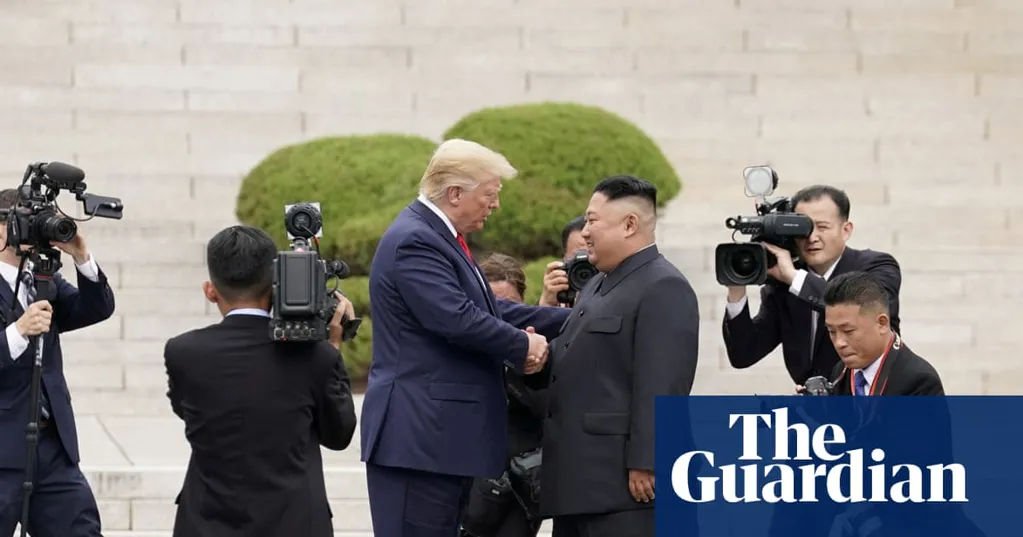US president is keen for a fourth meeting with North Korean leader Kim Jong-un, but has little to show from the previous three encounters.
Donald Trump's unshakeable belief in his ability as a peacemaker has raised the prospect of another attempt to solve one of the world's most implacable crises: North Korea's continuing development of nuclear weapons.
During an occasionally fractious meeting with Lee Jae Myung in the White House on Monday, Trump did at least agree with South Korea's liberal president on the need to engage with the North's leader, Kim Jong-un.
"Someday I'll see him. I look forward to seeing him. He was very good with me," Trump told reporters, adding that he hoped talks could happen before the end of the year.
If it happens, it would be the fourth time Trump has met the North Korean leader, with whom he has forged a close and potentially pivotal relationship. However, hopes for a breakthrough with a man Trump once derided as "little rocket man" appear to be as dim as ever.
In June 2018, the two held an unprecedented summit in Singapore, where they agreed to the "complete denuclearisation" of the Korean peninsula. Trump hailed the summit a success, but observers warned that, as one half of the peninsula in question, South Korea could have to end its dependence on US nuclear assets.
Trump was oblivious to more cautious voices, and arrangements were made for a second summit, in Hanoi in February 2019.
That was the moment Trump's optimism crashed against the rocks of North Korean realpolitik and the realisation that Kim was never going to abandon his nuclear deterrent and leave himself exposed to the fates that had befallen other US nemeses Colonel Muammar Gaddafi and Saddam Hussein.
The Hanoi summit was a study in the art of no deal, with both leaders departing early as North Korean and US statements blamed the other party for the failure to build on the consensus achieved in Singapore.
There was, though, one more opportunity for a meeting of minds, this time against a backdrop that has come to define the seven decades of tension since the 1950-53 war resulted in an uneasy truce and the formation of the world's most heavily fortified border.
In June 2019, after making a quick exit from the G20 summit in Osaka, Japan, Trump stepped across the military demarcation line separating South and North Korea and patted Kim on the shoulder. Again, the optics were extraordinary, as Trump became the first sitting US president to stand on North Korean soil. Their meeting, though, produced little of substance.
And so the nuclear stalemate continues. The US and North Korea have not held high-level talks for almost six years, unable to agree among other things on how much sanctions relief Pyongyang should receive for moving to dismantle its nuclear programme.
The long diplomatic pause has allowed North Korea to develop more sophisticated missiles and delivery systems - Lee said during his US visit that the regime now has the capacity to build 10 to 20 nuclear warheads a year, and needs only to perfect a re-entry vehicle to carry those warheads on ballistic missiles that can reach the US mainland.
It has also enabled Vladimir Putin - desperate to forge alliances while much of the world heaped condemnation on Russia's invasion of Ukraine - to step into the void.
As Pyongyang and Moscow grow closer economically and militarily against the backdrop of the Ukraine war, the prospects for a successful US-North Korea summit appear dimmer than ever. And not even Lee's suggested icebreaker - a round of golf on a North Korean course - is likely to change that.
